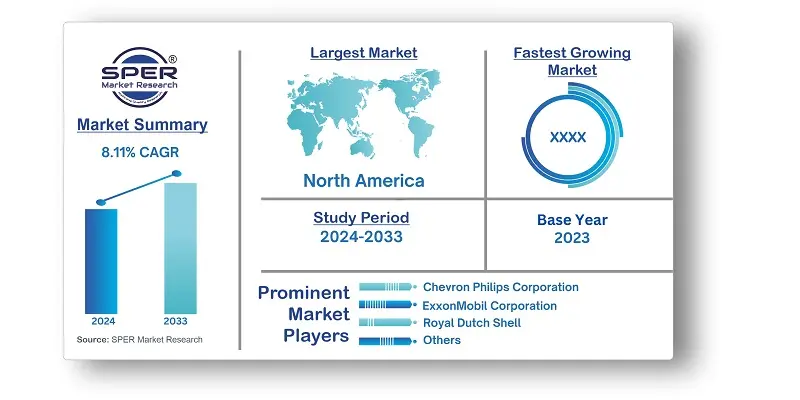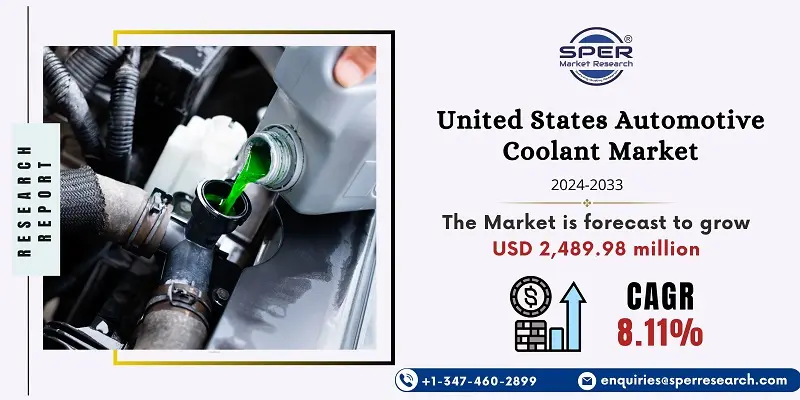
United States Automotive Coolant Market Growth, Size, Trends, Demand, Share and Future Outlook
United States Automotive Coolant Market Size- By Vehicle Type, Chemical Type- Regional Outlook, Competitive Strategies and Segment Forecast to 2033
| Published: Jun-2024 | Report ID: AMIN24143 | Pages: 1 - 105 | Formats*: |
| Category : Automotive & Transportation | |||
- UPM Biochemicals and HAERTOL established a strategic cooperation in February 2023 to develop a new line of carbon-neutral engine and battery coolants to help automakers minimise their CO2 footprint.
- In August 2022, Valvoline Cummins released Valvoline Advanced Coolant, a glycol-based full-antifreeze coolant for autos and commercial vehicles. The coolant contains OAT technology, which provides a service life of 5 years or up to 5,00,000 kilometres each drain interval.
- Castrol introduced the new Castrol ON e-thermal fluid in July 2021, an advanced new 'direct' battery e-thermal fluid that would allow future generations of EVs to charge faster while also providing improved performance, protection, and sustainability.


| Report Metric | Details |
| Market size available for years | 2020-2033 |
| Base year considered | 2023 |
| Forecast period | 2024-2033 |
| Segments covered | By Vehicle Type, By Chemical Type |
| Regions covered | Northeast, South, Midwest, West |
| Companies Covered | Royal Dutch Shell, ExxonMobil Corporation, Chevron Philips Corporation, Sinopec, Total S.A., Kost USA, Motul, Ashland Corporation, British Petroleum PLC., Lukoil, Petronas, Sinclair Oil Corporation. |
- Automotive coolant manufacturers
- Automotive distributors
- Automotive industry associations
- Automotive maintenance and repair service providers
- Automotive OEMs (Original Equipment Manufacturers)
- Automotive parts retailers
- Commercial vehicle fleet operators
- Government regulatory bodies (related to automotive safety and environmental standards)
- Research institutions and laboratories focusing on automotive fluids
- Vehicle owners and enthusiasts
| By Vehicle Type: |
|
| By Chemical Type: |
|
- United States Automotive Coolant Market Size (FY’2024-FY’2033)
- Overview of United States Automotive Coolant Market
- Segmentation of United States Automotive Coolant Market By Vehicle Type (Passenger Car, Commercial Vehicle)
- Segmentation of United States Automotive Coolant Market By Chemical Type (Ethylene Glycol, Propylene Glycol)
- Statistical Snap of United States Automotive Coolant Market
- Expansion Analysis of United States Automotive Coolant Market
- Problems and Obstacles in United States Automotive Coolant Market
- Competitive Landscape in the United States Automotive Coolant Market
- Impact of COVID-19 and Demonetization on United States Automotive Coolant Market
- Details on Current Investment in United States Automotive Coolant Market
- Competitive Analysis of United States Automotive Coolant Market
- Prominent Players in the United States Automotive Coolant Market
- SWOT Analysis of United States Automotive Coolant Market
- United States Automotive Coolant Market Future Outlook and Projections (FY’2024-FY’2033)
- Recommendations from Analyst
1.1. Scope of the report1.2. Market segment analysis
2.1. Research data source
2.1.1. Secondary Data2.1.2. Primary Data2.1.3. SPER’s internal database2.1.4. Premium insight from KOL’s
2.2. Market size estimation
2.2.1. Top-down and Bottom-up approach
2.3. Data triangulation
4.1. Driver, Restraint, Opportunity and Challenges analysis
4.1.1. Drivers4.1.2. Restraints4.1.3. Opportunities4.1.4. Challenges
4.2. COVID-19 Impacts of the United States Automotive Coolant Market.
5.1. SWOT Analysis
5.1.1. Strengths5.1.2. Weaknesses5.1.3. Opportunities5.1.4. Threats
5.2. PESTEL Analysis
5.2.1. Political Landscape5.2.2. Economic Landscape5.2.3. Social Landscape5.2.4. Technological Landscape5.2.5. Environmental Landscape5.2.6. Legal Landscape
5.3. PORTER’s Five Forces
5.3.1. Bargaining power of suppliers5.3.2. Bargaining power of buyers5.3.3. Threat of Substitute5.3.4. Threat of new entrant5.3.5. Competitive rivalry
5.4. Heat Map Analysis
6.1. United States Automotive Coolant Market Manufacturing Base Distribution, Sales Area, Product Type6.2. Mergers & Acquisitions, Partnerships, Product Launch, and Collaboration in United States Automotive Coolant Market
7.1. United States Automotive Coolant Market Size, Share and Forecast, By Vehicle Type, 2020-20267.2. United States Automotive Coolant Market Size, Share and Forecast, By Vehicle Type, 2027-20337.3. Passenger Car7.4. Commercial Vehicle
8.1. United States Automotive Coolant Market Size, Share and Forecast, By Chemical Type, 2020-20268.2. United States Automotive Coolant Market Size, Share and Forecast, By Chemical Type, 2027-20338.3. Ethylene Glycol8.4. Propylene Glycol
9.1. United States Automotive Coolant Market Size and Market Share
10.1. United States Automotive Coolant Market Size and Market Share By Region (2020-2026)10.2. United States Automotive Coolant Market Size and Market Share By Region (2027-2033)10.3. Northeast10.4. South10.5. Midwest10.6. West
11.1. Royal Dutch Shell
11.1.1. Company details11.1.2. Financial outlook11.1.3. Product summary11.1.4. Recent developments
11.2. ExxonMobil Corporation
11.2.1. Company details11.2.2. Financial outlook11.2.3. Product summary11.2.4. Recent developments
11.3. Chevron Philips Corporation
11.3.1. Company details11.3.2. Financial outlook11.3.3. Product summary11.3.4. Recent developments
11.4. Sinopec
11.4.1. Company details11.4.2. Financial outlook11.4.3. Product summary11.4.4. Recent developments
11.5. Total S.A
11.5.1. Company details11.5.2. Financial outlook11.5.3. Product summary11.5.4. Recent developments
11.6. Kost USA
11.6.1. Company details11.6.2. Financial outlook11.6.3. Product summary11.6.4. Recent developments
11.7. Motul
11.7.1. Company details11.7.2. Financial outlook11.7.3. Product summary11.7.4. Recent developments
11.8. Ashland Corporation
11.8.1. Company details11.8.2. Financial outlook11.8.3. Product summary11.8.4. Recent developments
11.9. British Petroleum PLC
11.9.1. Company details11.9.2. Financial outlook11.9.3. Product summary11.9.4. Recent developments
11.10. Lukoil
11.10.1. Company details11.10.2. Financial outlook11.10.3. Product summary11.10.4. Recent developments
11.11. Petronas
11.11.1. Company details11.11.2. Financial outlook11.11.3. Product summary11.11.4. Recent developments
11.12. Sinclair Oil Corporation
11.12.1. Company details11.12.2. Financial outlook11.12.3. Product summary11.12.4. Recent developments
11.13. Others
SPER Market Research’s methodology uses great emphasis on primary research to ensure that the market intelligence insights are up to date, reliable and accurate. Primary interviews are done with players involved in each phase of a supply chain to analyze the market forecasting. The secondary research method is used to help you fully understand how the future markets and the spending patterns look likes.
The report is based on in-depth qualitative and quantitative analysis of the Product Market. The quantitative analysis involves the application of various projection and sampling techniques. The qualitative analysis involves primary interviews, surveys, and vendor briefings. The data gathered as a result of these processes are validated through experts opinion. Our research methodology entails an ideal mixture of primary and secondary initiatives.



Frequently Asked Questions About This Report
PLACE AN ORDER
Year End Discount
Sample Report
Pre-Purchase Inquiry
NEED CUSTOMIZATION?
Request CustomizationCALL OR EMAIL US
100% Secure Payment






Related Reports
Our Global Clients
Our data-driven insights have influenced the strategy of 200+ reputed companies across the globe.




















